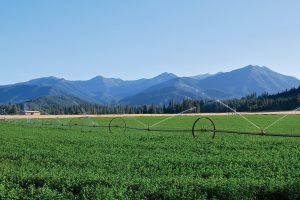
The chemicals once used to kill insects, weeds, and mildew have been replaced and so has much of the standard electrical supply. The bright sunlight that pours down on the fields also floods into the solar panels that Doug Shafer has installed. The solar panels have reduced his monthly power bill from $3,000 to about $40.
Shafer freely admits that the changes he instituted at his vineyard did not necessarily stem from his general concern for the environment. He was worried about the future health of his land. Another well-respected vineyard in the region was experiencing a steady decline in the quality of its grapes, a decline that the owner attributed to exhausted soils. Shafer, whose winery was started in 1922, saw this as a warning and began to consider his options.
By planting cover crops such as clover and mustard, Shafer discovered he could choke out the weeds. When the crop cover decomposed, it provided nutrition for the vines. While alive and thriving, the cover crops were natural habitat for the good bugs that prey on bad bugs (or at least bugs bad for growing grape vines). Both sharpshooters and leafhoppers can be devastating to a vineyard, but wasps, ladybugs, and others provide an effective SWAT team, eradicating the invaders. Shafer built a bat house and discovered that bats may have a taste for leafhoppers. The songbirds, who have also been provided with their own housing, eat insect pests, too, although a few of the beneficial bugs get gobbled up in the process. Hawks, owls, and kestrels prey on gophers, mice, and voles, which feed on the young vines. With night-hunting owls in the mix, Shafer has 24-hour protection.
While not all vineyards are rushing to adopt these practices, Shafer is pleased with the results. His Cabernet Sauvignon continues to draw raves at $150 a bottle, and he feels confident that he has ensured a healthy future for his winery while eliminating the costs of many chemicals and even a great deal of electricity.
—San Francisco Chronicle


